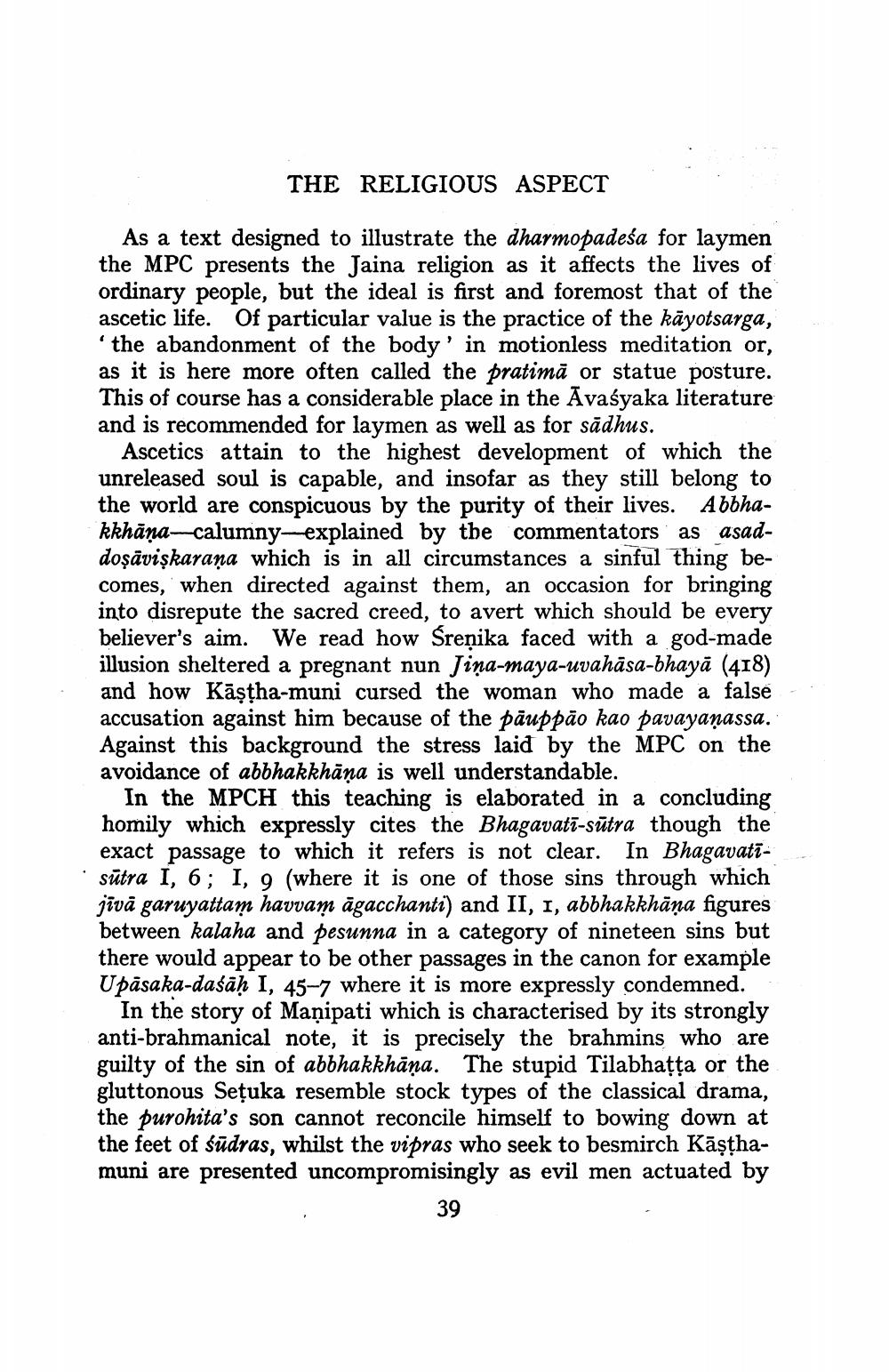________________
THE RELIGIOUS ASPECT
As a text designed to illustrate the dharmopadesa for laymen the MPC presents the Jaina religion as it affects the lives of ordinary people, but the ideal is first and foremost that of the ascetic life. Of particular value is the practice of the kayotsarga, 'the abandonment of the body' in motionless meditation or, as it is here more often called the pratimă or statue posture. This of course has a considerable place in the Avaśyaka literature and is recommended for laymen as well as for sadhus.
Ascetics attain to the highest development of which the unreleased soul is capable, and insofar as they still belong to the world are conspicuous by the purity of their lives. Abbhakkhāṇa-calumny-explained by the commentators as asaddoṣāviṣkarana which is in all circumstances a sinful thing becomes, when directed against them, an occasion for bringing into disrepute the sacred creed, to avert which should be every believer's aim. We read how Śreņika faced with a god-made illusion sheltered a pregnant nun Jina-maya-uvahasa-bhayā (418) and how Kāṣṭha-muni cursed the woman who made a false accusation against him because of the pauppão kao pavayaṇassa. Against this background the stress laid by the MPC on the avoidance of abbhakkhāna is well understandable.
In the MPCH this teaching is elaborated in a concluding homily which expressly cites the Bhagavati-sutra though the exact passage to which it refers is not clear. In Bhagavatisūtra I, 6; I, 9 (where it is one of those sins through which jīvā garuyattam havvam agacchanti) and II, 1, abbhakkhāņa figures between kalaha and pesunna in a category of nineteen sins but there would appear to be other passages in the canon for example Upāsaka-daśāḥ I, 45-7 where it is more expressly condemned.
In the story of Manipati which is characterised by its strongly anti-brahmanical note, it is precisely the brahmins who are guilty of the sin of abbhakkhāna. The stupid Tilabhaṭṭa or the gluttonous Sețuka resemble stock types of the classical drama, the purohita's son cannot reconcile himself to bowing down at the feet of sūdras, whilst the vipras who seek to besmirch Kāṣṭhamuni are presented uncompromisingly as evil men actuated by
39




